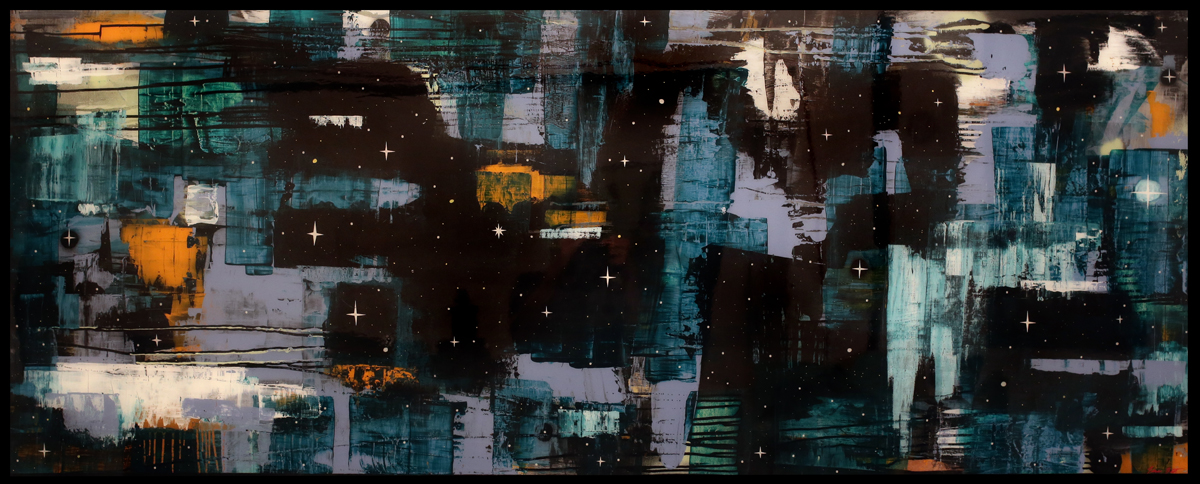
THE DAILY PIC (#1663): I never thought about it before, but there’s a strange correlation between the heyday of Abstract Expressionism and the birth of the postwar Space Age. I was woken up to that link (or – OK – coincidence) by some of the works in a show by the young painter Jesse Best now at Galerie Protégé in New York, dedicated to showing emerging artists.
Best’s pictures are built around riffs on the classic gestures and visual textures of AbEx. Scattered among his abstract brushstrokes, however, are little white stars that conjure up a vision of the heavens you might see on the cover of a science-fiction novel from the ’50s. Somehow, six decades’ worth of historical perspective have let Best channel the real cultural synergy that existed – in what we might want to call Nemerovian terms – between astronautics on the canvas and in technology. There’s certainly something “spacey” about both Pollock’s nebulas of paint and Ad Reinhardt’s black infinities, and I don’t think it’s wrong to link that to the radical futurisms of the same era’s science and science fiction. Both capitalism and communism were dreaming big after the American and Russian victories in World War II, and – at least in the United States – both artists and engineers shared in those reveries. The Space Race was as much about making SciFi into reality as about any truly practical needs.
With their aggressively hand-crafted pictures, the AbEx-ers were doing their best to resist the pull of the bright new world of technology, but their abstractions always looked great alongside starburst clocks by George Nelson and planetary coat hooks by the Eameses.
Best covers his painted surface with a thick, glossy coating of transparent resin. That gives his starry-eyed pictures a televisual, Jetsons glow that pulls abstraction and astronomy into the same orbit within them.
For a full survey of past Daily Pics visit blakegopnik.com/archive.